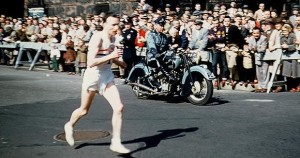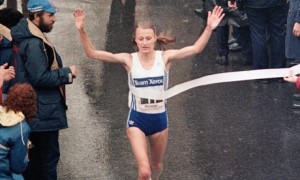The History of Famous Marathon Runners
The first modern marathons were held at the 1896 Summer Olympics, and were won by two Greek runners – Kharilaos Vasilakos and Ioannis Lavrentis. In the ten years that followed, their times of 3:18:00 and 3:11:27 (respectively) would be beaten by runners from Britain, Japan, and America – the last of which was run by Johnny Hayes at the 1908 Summer Olympics in what is considered to be the first marathon over a now official distance of 42.195 km.
Top Runners from Around the World
From 1908 onwards, the field of marathon running began to be dominated by an elite set of countries who regularly produced high performing marathon standard athletes.
In the men’s races, Sweden, Japan, American and the UK were regular contenders for the top spot, with many of their runners continuing to break records. A roster of familiar faces began to creep in: Son Kitei of Japan, Jim Peters of the UK (who broke the world record four times between 1952 and 1954), and Derek Clayton of Australia, who broke his first record in 1967 and followed up with an encore in 1969. It wasn’t until 2002, however, that the title of ‘World’s Best’ was introduced and presented for the very first time to American runner Khalid Khannouchi for his time of 2:05:37.8.
Women Showcase Their Abilities
In the women’s races, which weren’t formally recognized until Violet Piercy became the first female to run the now standard distance, in 1926, it has historically very much been American runners – such as Elizabeth Bonner and Jacqueline Hansen – who have tended to dominate the record tables. However, European countries such as the UK, France, West Germany and Norway all regularly produced runners of a high enough caliber to take the top spot, including such names as Christa Vahlensieck, Grete Waitz, Ingrid Kristiansen and Paula Radcliffe. Radcliffe was the first and only of the women so far to receive the prestigious, IAAF endorsed ‘World’s Best’ award.
Inspiring Performances from Incredible Athletes
This incredible roster of high performance athletes should be an inspiration to any of us who has an interest in long distance running, whether it be on a competitive level or not. The habits and training preferences of such athletes can also be used as good advice for independent training, including which types of clothing should be worn – for example, as a winter outdoor look base layers are crucial.















